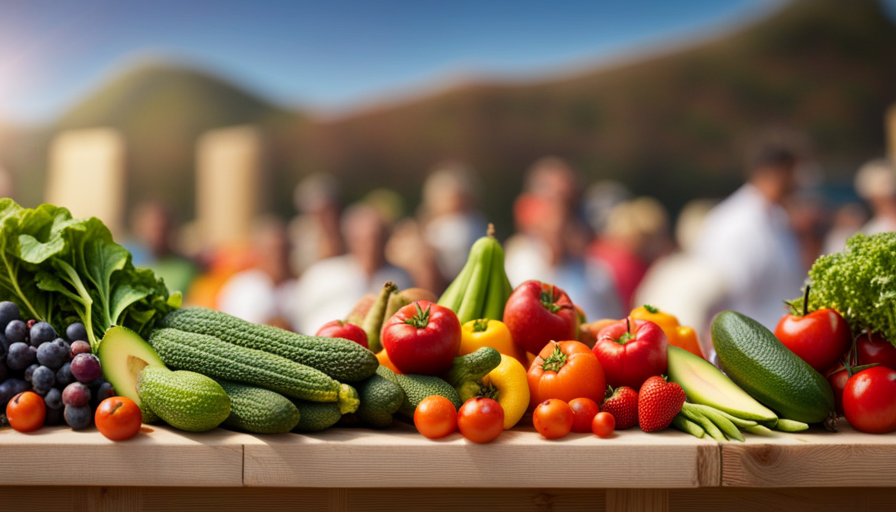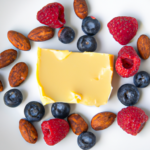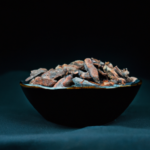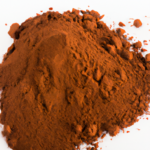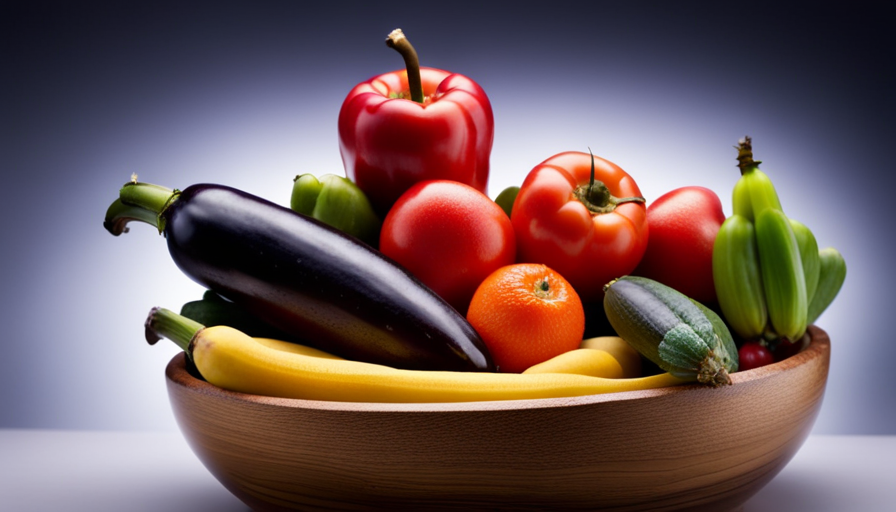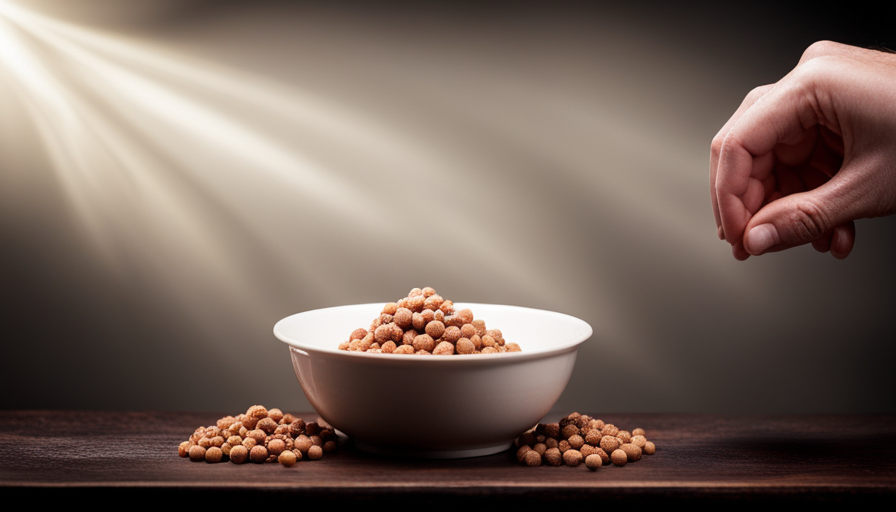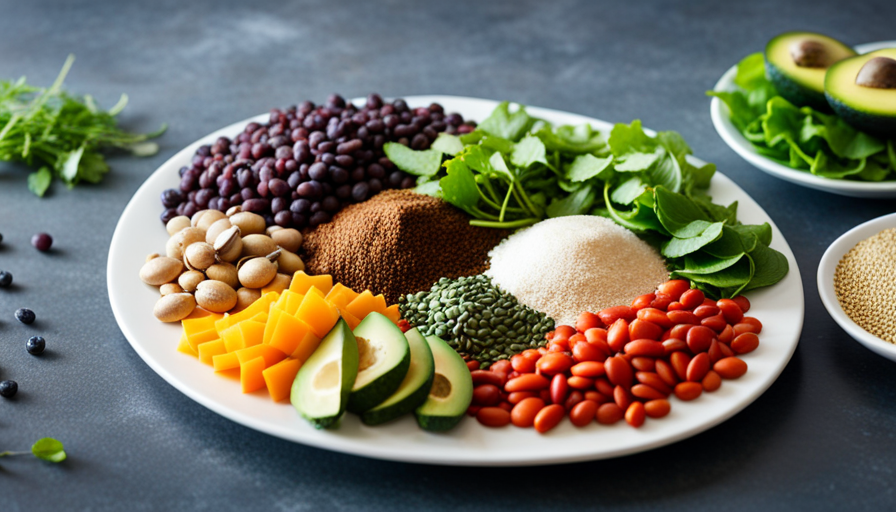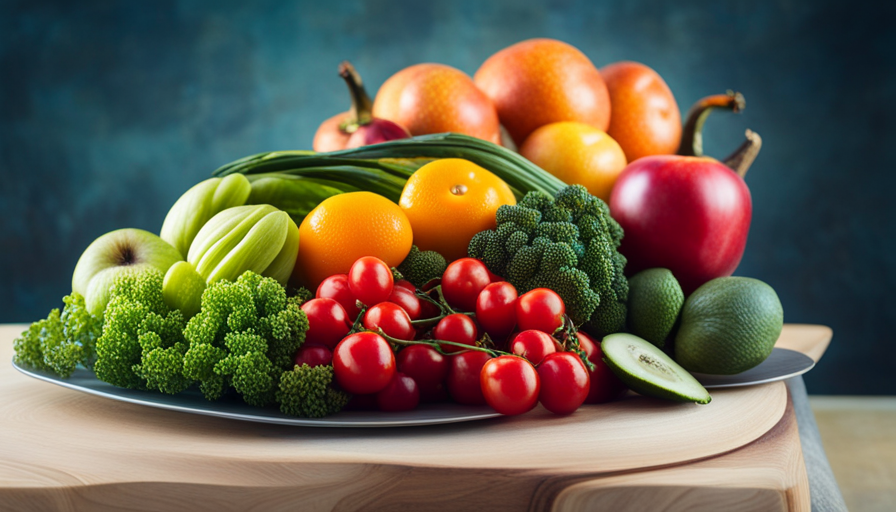If you are interested in merging the advantages of a raw food regimen with the benefits of a ketogenic diet, the raw food ketogenic diet could be the perfect fit for you. This innovative eating plan emphasizes the intake of raw, organic foods that are low in carbs and rich in good fats.
By following this diet, you can potentially experience weight loss, improved digestion, increased energy levels, and enhanced mental clarity. But how do you actually do a raw food ketogenic diet?
In this article, we will guide you through the process of transitioning to a raw food ketogenic diet, choosing the right foods, planning your meals, managing your nutritional needs, incorporating exercise, and staying motivated. Get ready to embark on a journey towards optimal health and wellness with the raw food ketogenic diet.
Key Takeaways
- Raw food ketogenic diet involves consuming raw, unprocessed foods low in carbs and high in healthy fats.
- It can lead to benefits such as weight loss, improved digestion, increased energy levels, and enhanced mental clarity.
- Careful meal planning and preparation are necessary to meet all nutrient needs, especially for certain vitamins and minerals.
- The diet focuses on consuming healthy fats like avocados, nuts, and seeds, and includes plant-based protein sources like spirulina, hemp seeds, and chia seeds.
Understanding the Raw Food Ketogenic Diet
So, you’re interested in understanding the raw food ketogenic diet, huh? Well, let’s dive right in!
The raw food ketogenic diet is a nutritional approach that combines the principles of a raw food diet and a ketogenic diet. It involves consuming primarily raw, unprocessed foods while maintaining a high-fat, low-carbohydrate intake.
One of the benefits of the raw food ketogenic diet is its potential for weight loss. By limiting carbohydrate intake and focusing on whole, unprocessed foods, it can help control hunger and promote fat burning. Additionally, this diet may improve overall digestion and nutrient absorption due to its emphasis on plant-based foods.
However, there are a few drawbacks to consider. Following a raw food ketogenic diet can be challenging, as it requires careful meal planning and preparation. It may also be difficult to meet all nutrient needs, particularly for certain vitamins and minerals that are more abundant in cooked foods. Another common misconception is that all fats are healthy on this diet, which isn’t the case. It’s important to focus on consuming healthy fats like avocados, nuts, and seeds.
The raw food ketogenic diet offers potential benefits for weight loss and improved digestion. However, it requires careful planning and attention to nutrient intake. Make sure to consult with a healthcare professional before starting any new diet.
Benefits of the Raw Food Ketogenic Diet
Additionally, embracing a raw food ketogenic lifestyle brings forth a cornucopia of advantages, like unlocking the door to a metabolic paradise. When it comes to health benefits, the raw food ketogenic diet has been shown to improve several aspects of your well-being.
Firstly, this diet can lead to weight loss benefits. By eliminating processed foods and focusing on whole, unprocessed ingredients, your body can enter a state of ketosis, where it burns fat for fuel instead of carbohydrates. This metabolic shift can result in significant weight loss.
Furthermore, the raw food ketogenic diet has been linked to improved heart health. By consuming a diet rich in plant-based fats and proteins, you can lower your cholesterol levels and reduce the risk of cardiovascular diseases. Additionally, this diet can also improve insulin sensitivity, which is beneficial for individuals with diabetes or insulin resistance.
Moreover, the raw food ketogenic diet provides your body with a plethora of antioxidants, vitamins, and minerals, which can boost your immune system and protect against chronic diseases. The high fiber content of this diet can also improve digestion and promote a healthier gut microbiome.
The raw food ketogenic diet offers a multitude of health benefits, including weight loss, improved heart health, enhanced insulin sensitivity, and a stronger immune system. By embracing this lifestyle, you can unlock the door to a metabolic paradise and improve your overall well-being.
Getting Started: Transitioning to a Raw Food Ketogenic Diet
Embarking on this transformative journey to a metabolic paradise, you can seamlessly transition into a lifestyle that nourishes your body and ignites your well-being. Transitioning to a raw food ketogenic diet may seem daunting at first, but with the right approach, it can be a smooth process.
To begin your transition, it’s important to understand the basic principles of the raw food ketogenic diet. This way of eating combines the benefits of raw food with the metabolic advantages of a ketogenic diet. The transition process involves gradually reducing your carbohydrate intake while increasing your consumption of healthy fats and raw plant-based foods. This allows your body to adapt to using ketones as its primary source of fuel, leading to increased energy and mental clarity.
Common misconceptions about the raw food ketogenic diet include concerns about nutrient deficiencies and difficulty in obtaining enough protein. However, with careful planning and the inclusion of a variety of raw plant-based foods, it is possible to meet all your nutritional needs on this diet. Nutrient-dense foods such as leafy greens, avocados, nuts, and seeds can provide you with essential vitamins, minerals, and healthy fats. Additionally, incorporating plant-based protein sources like spirulina, hemp seeds, and chia seeds can help ensure you meet your protein requirements.
By following a gradual transition process and dispelling common misconceptions, you can smoothly embrace a raw food ketogenic diet and experience the many benefits it offers for your overall well-being.
Choosing the Right Foods for a Raw Food Ketogenic Diet
To make the most of your journey towards metabolic paradise, it’s crucial to carefully select nourishing and energizing options that align with your new lifestyle. Choosing appropriate ingredients is key when following a raw food ketogenic diet. Here are four essential components to consider:
-
Leafy Greens: Incorporating nutrient-dense leafy greens like spinach, kale, and Swiss chard into your meals provides an abundance of vitamins, minerals, and antioxidants. These greens also have a low carbohydrate content, making them ideal for maintaining ketosis.
-
Healthy Fats: Avocados, coconut oil, and nuts are excellent sources of healthy fats, which are essential for a raw food ketogenic diet. These fats provide a satiating effect, promote brain health, and help maintain stable blood sugar levels.
-
Low-Carb Vegetables: Vegetables such as cauliflower, zucchini, and bell peppers are low in carbohydrates and can be enjoyed raw or lightly cooked. They add variety to your meals while keeping your carbohydrate intake in check.
-
High-Quality Protein: Choose plant-based sources of protein such as hemp seeds, chia seeds, and spirulina. These options not only provide the necessary amino acids but also offer additional health benefits like omega-3 fatty acids and antioxidants.
Understanding macronutrient ratios is also essential in a raw food ketogenic diet. Aim for a high percentage of healthy fats, moderate protein intake, and a low-carbohydrate content to maintain ketosis and maximize the benefits of this lifestyle.
Meal Planning and Recipes for a Raw Food Ketogenic Diet
In order to create delicious and satisfying meals while following a raw food ketogenic lifestyle, it’s important to plan your meals ahead and explore a wide range of recipe options. Meal planning is crucial to ensure that you are getting all the necessary nutrients while keeping your carbohydrates low. By incorporating a variety of vegetables, healthy fats, and plant-based proteins, you can create a well-balanced and nutrient-dense meal.
To make the meal planning process easier, here is a table that provides some meal ideas for a raw food ketogenic diet:
| Meal | Ingredients | Benefits |
|---|---|---|
| Zucchini Noodles with Avocado | Zucchini, avocado, lemon juice, sea salt | High in healthy fats and low in carbs |
| Cauliflower Rice Stir-fry | Cauliflower, mixed vegetables, coconut aminos | Low carb alternative to traditional rice |
| Kale Salad with Hemp Seeds | Kale, hemp seeds, olive oil, lemon juice | High in fiber, vitamins, and minerals |
| Raw Vegan Sushi Roll | Nori sheets, cucumber, avocado, bell pepper | Low carb alternative to traditional sushi |
| Coconut Chia Pudding | Coconut milk, chia seeds, vanilla extract | Rich in healthy fats and fiber |
These are just a few examples, but the possibilities are endless when it comes to raw food ketogenic recipes. Experiment with different flavors, textures, and ingredients to keep your meals exciting and enjoyable. Remember to listen to your body’s needs and adjust your meal plan accordingly. Happy meal planning and happy eating!
Achieving Ketosis on a Raw Food Ketogenic Diet
Get ready to experience the incredible benefits of achieving ketosis on a raw food ketogenic lifestyle! Achieving ketosis on a raw food ketogenic diet occurs when your body switches from using glucose as its primary fuel source to using ketones, which are produced from stored fat. This metabolic state offers numerous benefits for your health and well-being.
One of the main benefits of achieving ketosis is weight loss. When your body is in ketosis, it becomes more efficient at burning stored fat for energy. This can lead to significant weight loss, especially in combination with a raw food diet that’s low in carbohydrates.
In addition to weight loss, ketosis has been shown to improve mental clarity and focus. Many people report increased productivity and improved cognitive function when they’re in ketosis.
Furthermore, ketosis can also provide a steady and consistent source of energy. Unlike the highs and lows that come with blood sugar fluctuations, ketones provide a stable fuel source for your body and brain. This can lead to increased energy levels throughout the day, without the need for constant snacking or caffeine.
Overall, achieving ketosis on a raw food ketogenic diet can offer a range of benefits, including weight loss, improved mental clarity, and sustained energy levels. So, get ready to embrace the advantages of ketosis and enjoy the transformative effects it can have on your health and well-being.
Managing Nutritional Needs on a Raw Food Ketogenic Diet
Discover how you can effectively balance your nutritional requirements while following a raw food ketogenic lifestyle, ensuring optimum health and well-being. When it comes to meeting your protein requirements on a raw food ketogenic diet, it’s important to include a variety of plant-based protein sources such as nuts, seeds, and leafy greens. These foods provide essential amino acids that your body needs for muscle repair and growth. Additionally, incorporating high-quality plant-based protein powders into your diet can help you meet your protein needs more easily.
Balancing macronutrients on a raw food ketogenic diet can be achieved by focusing on nutrient-dense foods. Include plenty of healthy fats from sources like avocados, nuts, and coconut oil to provide energy and support ketosis. Incorporate low-carb vegetables like leafy greens, broccoli, and cauliflower to ensure you’re getting enough fiber, vitamins, and minerals. These foods can help you feel full and satisfied while maintaining ketosis.
To help you visualize a well-balanced raw food ketogenic diet, here is a table showcasing some protein-rich foods, healthy fats, and low-carb vegetables:
| Protein-Rich Foods | Healthy Fats | Low-Carb Vegetables |
|---|---|---|
| Almonds | Avocado | Spinach |
| Chia Seeds | Coconut Oil | Broccoli |
| Hemp Seeds | Walnuts | Cauliflower |
| Pumpkin Seeds | Flaxseeds | Kale |
| Sunflower Seeds | Olive Oil | Zucchini |
By incorporating these foods into your raw food ketogenic diet, you can ensure that you are meeting your protein requirements and balancing your macronutrients effectively. Remember to listen to your body and adjust your diet as needed to support your individual nutritional needs.
Combining Exercise with a Raw Food Ketogenic Diet
Maximize your results and boost your energy levels by incorporating exercise into your raw food keto lifestyle. Exercise plays a crucial role in achieving your fitness goals while following a raw food ketogenic diet.
When creating your exercise regimen, it’s important to consider your fitness goals and tailor your workouts accordingly. Incorporating both cardiovascular exercises and strength training can help you achieve optimal results.
Cardio exercises such as jogging, cycling, or swimming can improve your endurance and burn calories. Aim for at least 150 minutes of moderate-intensity aerobic activity each week.
Strength training exercises, on the other hand, help build lean muscle mass and increase your metabolism. Incorporate bodyweight exercises like push-ups, squats, and lunges into your routine. Additionally, consider using resistance bands or weights to challenge your muscles further.
Remember to listen to your body and start gradually. As you progress, you can increase the intensity and duration of your workouts. Stay hydrated, eat enough protein to support muscle growth, and prioritize rest and recovery.
By combining exercise with your raw food ketogenic diet, you can enhance your overall health and get closer to your fitness goals. So lace up your sneakers, grab your water bottle, and get ready to take your raw food keto lifestyle to the next level!
Overcoming Challenges and Staying Motivated on a Raw Food Ketogenic Diet
Despite facing uphill battles and feeling like you’re climbing a mountain, staying motivated on a raw food ketogenic diet is like riding a wave – you may stumble, but the exhilarating ride will keep you going.
One of the challenges you may encounter on this diet is overcoming cravings. When you eliminate processed foods and sugar from your diet, your body may initially crave them. However, it’s important to remember that cravings are temporary and can be overcome with time.
To manage cravings, focus on consuming nutrient-dense foods such as leafy greens, avocados, and nuts, which can help keep you satiated and reduce cravings.
Additionally, finding support can greatly contribute to your motivation. Connecting with others who are following a raw food ketogenic diet can provide a sense of community, encouragement, and accountability. Consider joining online forums, social media groups, or local meetups to connect with like-minded individuals.
Sharing your challenges, triumphs, and recipes with others can help you stay motivated and committed to your goals. Remember, staying motivated on a raw food ketogenic diet is a journey, and with the right strategies and support, you can overcome challenges and achieve success.
Frequently Asked Questions about the Raw Food Ketogenic Diet
Now that you’ve learned how to overcome challenges and stay motivated on a raw food ketogenic diet, let’s address some frequently asked questions about this unique approach to nutrition. It’s important to clear up any common misconceptions and understand the potential risks associated with the raw food ketogenic diet.
-
Is it possible to get enough nutrients on a raw food ketogenic diet?
- Yes, it’s possible to obtain all the necessary nutrients from a well-planned raw food ketogenic diet. By incorporating a variety of nutrient-dense foods such as leafy greens, avocados, nuts, and seeds, you can meet your nutritional needs.
-
Will I experience nutrient deficiencies on this diet?
- While it’s essential to ensure a balanced intake, nutrient deficiencies can occur if the diet isn’t adequately planned. It’s crucial to monitor your nutrient intake and consider supplementation if needed.
-
Are there any potential risks associated with the raw food ketogenic diet?
- The raw food ketogenic diet may not be suitable for everyone, especially those with certain medical conditions or nutrient deficiencies. It’s essential to consult with a healthcare professional before starting this diet to ensure it’s safe for you.
By addressing these frequently asked questions, we can dispel any misconceptions and provide a clearer understanding of the raw food ketogenic diet. Remember to prioritize your health and consult with a healthcare professional before making any significant dietary changes.
Frequently Asked Questions
Can I still consume dairy products on a raw food ketogenic diet?
Yes, you can still consume dairy products on a raw food ketogenic diet, but it’s important to choose wisely. While dairy is generally high in fat and low in carbohydrates, it’s also important to consider the quality and source of the dairy products. Opt for high-quality, organic, and full-fat dairy options like grass-fed butter or ghee.
If you’re looking for dairy alternatives, you can try coconut milk or almond milk, which are low in carbs and can be incorporated into a raw food ketogenic diet.
Is it possible to gain weight on a raw food ketogenic diet?
Yes, it’s possible to gain weight on a raw food ketogenic diet. While this diet is often associated with weight loss, it can also support muscle gain if you consume enough calories and protein.
Raw foods like nuts, seeds, avocados, and coconut oil are high in healthy fats and can help increase your calorie intake. Additionally, incorporating raw sources of protein, such as sprouted legumes and hemp seeds, can support muscle growth.
How long does it typically take to achieve ketosis on a raw food ketogenic diet?
Achieving ketosis on a raw food ketogenic diet typically takes time, as it depends on various factors like your metabolism and activity level. While there’s no exact time frame, it generally takes a few days to a week for your body to enter ketosis.
During this process, your body switches from using carbohydrates for energy to burning fat. It’s essential to monitor your macronutrient intake and ensure you’re consuming high-quality fats and low-carb foods to support ketosis.
Can I eat fruits on a raw food ketogenic diet?
Yes, you can eat fruits on a raw food ketogenic diet. However, it’s important to choose low-carb fruits such as berries, avocados, and lemons to maintain ketosis. These fruits are high in fiber, antioxidants, and essential vitamins, providing numerous health benefits.
Incorporating fruits into your raw food ketogenic diet can add variety to your meals while still supporting your body’s ketosis state.
What are some common challenges people face when following a raw food ketogenic diet?
When following a raw food ketogenic diet, you may encounter various challenges.
Emotionally, you might struggle with cravings for cooked foods or feel frustrated by the limited food options.
Socially, you may find it difficult to dine out or attend gatherings where non-ketogenic foods are served.
These challenges can be overcome by planning meals in advance, seeking support from like-minded individuals, and focusing on the health benefits of the diet.
What are the best sources of protein in a raw food ketogenic diet?
When it comes to getting protein raw diet, the best sources include nuts, seeds, leafy greens, and tofu. These foods are high in protein and low in carbs, making them ideal for a raw food ketogenic diet. Incorporating these into your meals can help you meet your protein needs while staying true to the raw food lifestyle.
Conclusion
In conclusion, the raw food ketogenic diet is a unique approach to nutrition that combines the benefits of both raw food and ketogenic diets. By understanding the principles and benefits of this diet, you can make informed choices about the foods you consume.
Transitioning to a raw food ketogenic diet requires careful planning and meal preparation, but with the right guidance, it can be a sustainable and fulfilling way of eating. Remember to prioritize your nutritional needs and combine exercise to maximize the benefits of this diet.
Stay motivated and overcome challenges by seeking support and staying informed.


